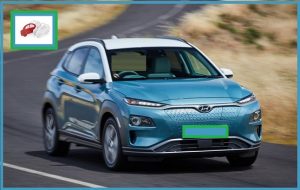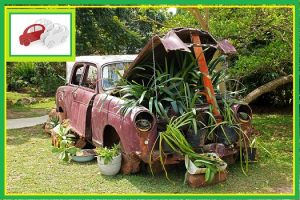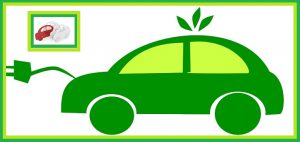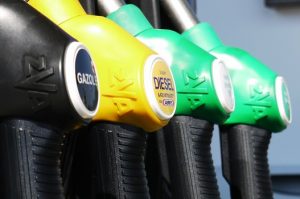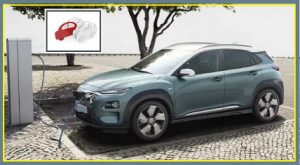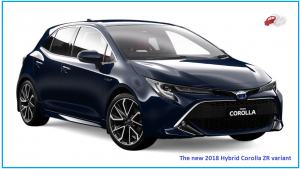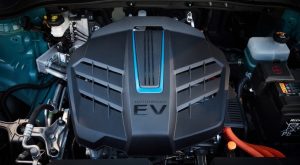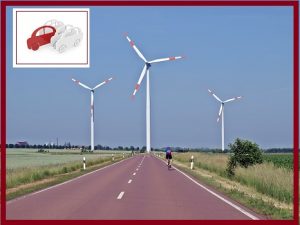DABAS blog post – late March 2019: Environmentally friendly car-buying – some things to consider.
Hello readers, as Earth Hour is approaching at the end of this month, if you are thinking of turning off your lights (from 8.30pm till 9.30 on the 30th of March 2019), at DABAS we suggest you keep your headlights on – if driving – for your obvious road safety, and instead investigate other ways in which your new-car purchasing choice can be environmentally friendly. With that in mind, if you’re in the market for a new (or near-new) car, you might want to consider a ‘green’ car to reduce your impact on the environment . . . and your future budget. And speaking of your environmental budget, some environmentally conscious car-buyers do think buying a second-hand car a few years old is better for the planet; this point of course is a two-sided coin and ultimately it is your personal choice, but do keep in mind, apart from the older exhaust emissions technology and standards, all the future maintenance expense of servicing/replacing worn parts of an older car contributes to global warming as well. All those parts etc. your used car may need do still get made in a potentially pollution-emitting setting. Technological and engineering production-line process advances in the majority of MY19 vehicles mostly have environmental impact reductions in mind throughout the entire manufacturing process.
Psst, Trivia time: were you aware? With most of the MY19 vehicles available in Australia at present, their paint is water based and applied in a controlled environment by specially designed robots.
We hope you find this blog-post on environmentally friendly cars an interesting read, whilst shining some light on information that may assist you selecting a suitable vehicle for your personal car-buying needs, providing some useful “very general-in-nature” information to help you on your vehicle selection and vehicle-buying journey; more detailed information and brochures on the featured manufacturer’s vehicles’ warranty periods, including the various model range’s mentioned special pricing offers that DABAS is currently aware of will be provided upon your transition to becoming a DABAS client.
If you would like DABAS’s assistance buying a vehicle, please click here.
Here we go, with so many vehicles on our local Melbourne metropolitan roads these days they of course do contribute to air pollution in our urban areas (especially the older pre-millennial makes and models) producing harmful substances such as carbon monoxide, nitrogen oxides and hydrocarbons, just to name a few! It has been reported that road traffic is apparently responsible for about 13% of Australia’s greenhouse gas emissions.
Although many more of us are getting on board with walking and cycling . . . or swimming to work? not everyone is ready to give up their car wheels completely. Luckily for us, the planet and the environment, with big thanks to advances in MY19’s modern technology, design and clever engineering advances in fuel alternatives, engine efficiency and manufacturing production processes there are now cars available that have less impact on the environment than the previous generation of new cars.
You can also spend less at the service station: With fuel prices constantly unreliable for Melbourne household budgets, and on the rise, a more fuel-efficient car means more money in your budget for other things. . . like a new winter open-water swimming wetsuit or beeswax wraps to replace your plastic wrap? But if you’re looking to save money overall, you need to do your research and homework (and be good at advanced mathematics), as the purchase cost of the car might cancel out any savings at the bowser. If you’re keen on being kinder to the environment, some technologies will be better at this than others; let’s have a brief look at some of the technologies available in 2019.
Fuel-efficient petrol, hybrid and electric cars; The fuel-efficient MY19 petrol, hybrid and electric cars available in Australia are easy to drive and use less fuel than comparable conventional older models. They burn less oil and emit less pollution and greenhouse gases. However, these petrol/hybrid and electric cars cost more than their standard petrol-only equivalents, so you may need to drive them for many years before you recover the price difference.
Fuel-efficient petrol cars; Car manufacturers can use several new technologies to make petrol-run cars more efficient without resorting to battery technology. These can include transmission guidance mechanisms for more efficient gear changing; automatic gearing that makes the best use of gear ratio; an engine-off mechanism that turns off the engine when the car stops at lights; braking systems that can feed energy back into the car battery; low-profile tyres to reduce rolling resistance; lighter weight materials in structures and design meaning better fuel efficiency, including engines that are more efficient and use lighter materials. Examples of a few car models that use these technologies include the Mazda SkyActiv and VW BlueMotion.
Hybrid cars: Hybrid cars use a combination of battery technology (electric engine) and a petrol engine. There are four main technologies available currently in the MY19 marketplace.
1) Power split or series parallel hybrid – the electric engine can power the car on its own. Examples include the Toyota Prius, Toyota Camry, Toyota Corolla, and Toyota Prius C (just to name a few).
2) Parallel hybrid – the electric engine assists the petrol engine when the vehicle is moving. Examples include the Honda CR-Z, Honda Civic Hybrid, and Honda Insight (just to name a few).
3) Series hybrid – mostly runs on battery, and the petrol engine recharges the battery. A past example of a series hybrid available in Australia was the Holden Volt.
4) Plug-in hybrids – supplement energy generation by charging from the power grid, however these are not yet as common in Australia as other overseas countries, . . . yet! . . . How ‘green’ these cars “really are for the purist” does depend on where the car owner sources their electricity from e.g. Latrobe-valley coal fired? or a green energy source like solar, wind, wave or water turbine, or re-cycling sourced methane, (just to name a few).
Electric cars: An electric car is powered by an electric engine and battery, recently introduced in Australia. There is currently a very slow uptake of these types of vehicles because (when brand-new) they can be considerably more expensive than a brand-new petrol-fueled car. Melbourne car-buyers still have concerns about not being able to go the longer distances a lot of us are used to driving on our weekend getaways as there are fewer – if any – recharging stations along our favorite Victorian (Australian) highways and byways, compared with petrol stations. It is also reported that new-car buyers are also concerned about the cost to replace the battery (although good battery warranties are included when new). Of course, as time goes by, these negative views may become less of a concern as our re-charging infrastructure increases across the well-travelled Australian road networks and the replacement battery prices come down; most manufacturers do back up these vehicles with a long warranty on the car’s battery. With battery technology advances in the future and recharging stations getting built – thus – becoming more accessible across our Australian road networks, range concerns should most likely decrease, and if electric cars become more popular with the mainstream of the new-car-buying public, their price will surely come down, thus becoming much more accessible. There are currently a few types of electric cars in Australia such as the Mitsubishi i-Miev and Nissan Leaf and the just launched Hyundai Kona EV. There are also reportedly others to be released in the Australian new-car market at some time in 2019.
Some more things to consider; An advantage of the electric car is the lack of moving parts compared to a conventional petrol engine vehicle – which hopefully in time – should make it cheaper to service the car. As per the plug-in hybrids above, how “green” these cars really are does depend on how green the electricity source is for both the car – and for the elephant in the room – its energy source for the manufacturing processes of both the vehicle and its components.
Different – more common – fuel types – petrol, diesel or LPG, you ask? Keep in mind that a litre of LPG contains less energy than a litre of petrol, so LPG consumption per 100km is higher than petrol consumption for models that have LPG and petrol versions (e.g. like the no-longer-manufactured and now in LMCT used-car lots MY15 Ford Falcon range). However, LPG burns a lot cleaner than petrol, so emissions are lower. Cars that run on diesel are usually more fuel-efficient than petrol versions of the same model, though diesel motors do produce particulate matter and higher levels of nitrogen oxides and can be much more expensive to service now and in the long run, especially if you don’t do a lot of long drives.
Fuel consumption of hybrid cars? Size-wise (not engine-wise; the point of hybrids is that they have smaller petrol engines) Toyota reportedly compared the hybrid Prius to its regular Camry. In tests carried out in the past for the Australian Green Vehicle Guide, the fuel consumption in the standard combined city/highway test cycle for the Prius was just 3.9L/100km; the automatic 2.5L version of the Camry used 7.8L/100km. The Honda Civic Hybrid reportedly uses 4.4L/100km, whilst the comparable non-hybrid Honda Civic, the manual Si sedan, uses 6.9L/100km. So, one thing is clear – if you drive a hybrid, you’ll be filling up your petrol tank less often.
Note – depending on the amount of driving you do regularly, a hybrid car may not save you money. Petrol is not (yet) quite expensive enough to make a hybrid the accountant’s vehicle of choice. With petrol at $1.50/L, and based on travelling 15,000km/year and the above consumption figures, it would take many years to gain back the difference in purchase prices between the base Prius and the Camry, same goes for the Honda. But that’s assuming petrol prices won’t soon rise much more than $1.50c at the Little River (halfway to Geelong, Vic) freeway super-stops, or the Dadswells Bridge giant koala fuel stop (as featured in the Paul Hogan and Shane Jacobson road-trip movie, Charlie and Boots).
Emissions; Hybrids emit much less greenhouse gas than most standard petrol cars. The main greenhouse gas from cars is carbon dioxide, which is directly related to the amount of fuel used. An Australian study that included the Prius and some experimental hybrids reportedly estimated they produced 66% less carbon dioxide than the average Australian family car. Reportedly the Green Vehicle Guide rates the Prius at 9 out of 10 for greenhouse gas emissions and the Civic Hybrid at 8.5. – and for the petrol heads – as a comparison, the non-hybrid Civic scores a 7, the Camry a 6.5.
With fully electric vehicles, the big advantage for environmentally conscious drivers is the lack of emissions from the non-existent tailpipe. There will be indirect emissions, however, as mentioned previously in this blog post related to the electricity source that powers the battery – and for the elephant in the room – the power-hungry processes in which the car was manufactured.
Which is greenest? If your goal is zero emissions, walk or run or swim to work, don’t drive! – but if you still need a car, the greenest set of wheels you can drive (other than roller-skates, a skateboard, scooter or tricycle) is an electric car charged with solar electricity, or any other low-carbon power source such as wind or hydro. Or if you want to compensate mother earth you could plant 10,000 trees in your backyard (instead of that poolroom and jacuzzi extension) to lower your personal carbon footprint. Charging an electric car with electricity generated from coal, gas or oil means carbon emissions are still being generated in somebody else’s backyard – hello customers from the Latrobe Valley in Victoria – and the impact on the environment is likely to be greater than that of a hybrid or fuel-efficient petrol car.
Hybrids are a greener option than petrol cars, because the better the fuel efficiency, the lower the emissions. The general cost of an MY19 environmentally friendly new-car: electric cars cost upwards of $52,000; hybrid cars cost upwards of $27,000; fuel-efficient petrol cars cost upwards of $15,500. Here are some common MY19 eco-friendly cars available in Australia- (just to name a few): Toyota Prius. An early hybrid and perhaps one of the more common green cars. Nissan Leaf. A fully electric hatch with a small solar panel for internal accessories. Tesla Model S. Tesla only makes electric cars. BMWi3. Toyota Prius c. Hyundai Kona electric (just launched in showrooms). Mitsubishi Outlander PHEV. Toyota Corolla hybrid. Toyota Camry Hybrid.
At DABAS we know that buying a car to suit your needs can be one of the biggest purchases in your life; we hope this intended to be “general-in-nature advice and information” blog page has provided some helpful assistance for you in deciding the path of your car-buying journey. Please note examples, options, pricing and information mentioned in this blog post are to be considered as a very general-in-nature summary; all specifications, information and advice mentioned in this blog page may be outdated or superseded by the time of your reading of this blog page; information in all DABAS blog pages will be confirmed at the time of you updating into your next vehicle, along with your chosen vehicle’s sales representative in their LMCT showroom at the time you transition to becoming a client of DABAS. We look forward to having a chat when the need arises for you to update your car; to assess your personal car-safety requirements and buying needs to suit your lifestyle. And importantly your set specified budget!
Whatever roads your life journey takes you on, DABAS can help you find a car to travel those roads.
When it comes time to update your car DABAS is aware of some things to consider within these featured model ranges, plus more of the opposition comparisons, and also things to keep in mind – including when you are trading in your old car at a LMCT used-car yard – and the special trade-in incentives offered on drive-away-no-more-to-pay deals obtainable – at times – within leading brands’ Melbourne LMCT car dealerships.
These will be discussed upon your transition to becoming a client of DABAS.
To contact DABAS to discuss your car-buying needs, please click here
To see a self-evaluating check list – is it time to update your car, please click here
To see some interesting things to consider when buying a car, please click here
To see 3 things to consider when moving on from your old car, please click here
For a step-by-step example of a DABAS car-buying journey, please click here
For a DABAS blog on comparing vehicle manufacturers’ warranty periods, please click here.
For “many more” DABAS past blog topics: see our archived index here
If you would like to go to the car-auctions as an alternative car-buying option: please click here
Thanks for visiting DABAS’s website and blog: Have a great day, Cheers, Tim.
Please note; information mentioned on this page is to be considered as a general-in-nature summary; all information and advice mentioned may be outdated or superseded by the time of your reading of this page; all information will be confirmed at the time of your transition to becoming a client of DABAS.



